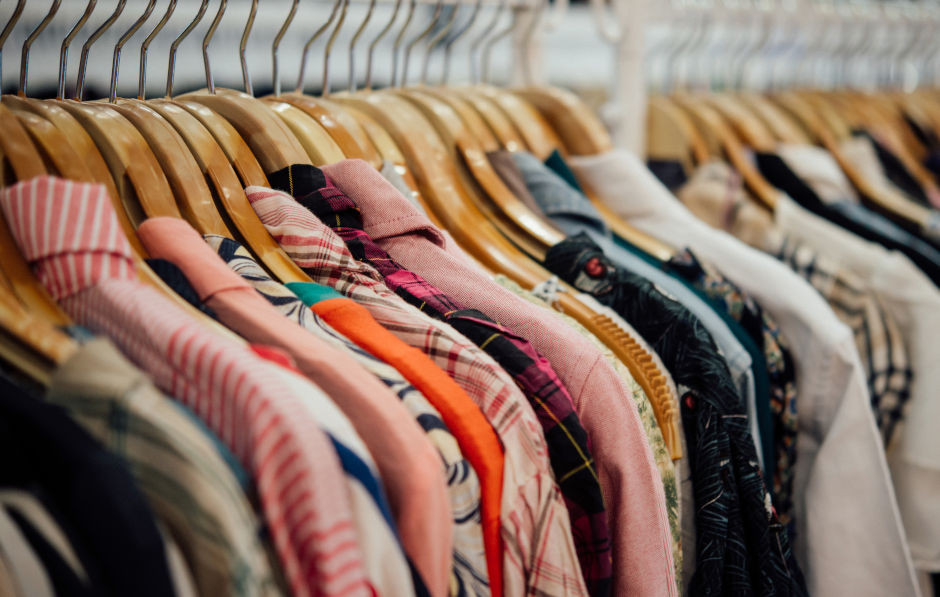
The unsustainability of the fast fashion industry has increased the demand for vintage clothes. Our in-depth guide looks into the world of vintage clothing to discover exactly what it is, and the benefits of wearing it.
How old are vintage clothes?
In the world of fashion and couture, the same rules apply as for period pieces of furniture and decorative items - anything older than 100 years is considered antique, with items over 20 years old but younger than 100 years old being labelled ‘vintage’. In 2024, vintage clothing is therefore anything made between 1924 and 2004. However, by the end of the 20th century, because clothing manufacturing had largely moved overseas and the move towards synthetic fabrics meant that clothes could be produced cheaply in large quantities, many experts consider vintage clothing to date back to the 1980s.
What is vintage clothing?
It’s important to distinguish between vintage clothing and retro clothing as these terms are often used interchangeably, when in fact they are different things. Vintage clothes are genuine pieces and authentic to their time period. Produced in the era, using original fabric, patterns and sewing techniques, they feature original detailing and shapes. Retro clothing could have been made last week in the style of a bygone age and while it will have the look of vintage clothes, it will be made from modern fabrics, using modern techniques.
Features of genuine vintage clothes
As mentioned above, vintage clothes are made from original fabrics and many early pieces will have been hand stitched. Often precision-tailored for an exact fit, vintage clothes will have style features such as oversized lapels and wide legs, and pleating was also a favourite. Most importantly for today’s buyer is the fact that we have grown over the years, so vintage clothing often has smaller proportions to today’s contemporary pieces.
Why vintage clothes are better than fast fashion
To answer this, we have to look at why fast fashion is unsustainable. Today, the industry accounts for the production of one tenth of the world’s total global emissions – this equates to more greenhouse gases than all international flights and shipping put together. Fast fashion items are produced quickly (hence ‘fast’) in order for manufacturers to produce entire lines every few weeks. This results in pieces being discarded and heading to landfill sites at a rate of 300,000 tonnes a year.
Who buys vintage clothes?
Revival event enthusiasts - all around the country, event planners are organising a variety of period revival days and weekends. From World War II weekends to the Goodwood Revival, dedicated attendees will look for original and authentic vintage clothing dating back to the 1930s, through to the 1960s.
TV and film studio wardrobe departments – period productions call for an authenticity not to be found in retro clothing. Vigilant viewers will spot a reproduction in a heartbeat so wardrobe departments have to be exact when sourcing their particular props and accessories.
The environmentally conscious – vintage clothes are durable (by their very definition, they have endured at least 20 years) and by wearing vintage items, we can divert even more products ending up in landfill.
The nonconformist fashionista – when you buy an outfit from a High Street brand, the chances of seeing someone else in it are quite high. Having someone in the same suit in the office isn’t too bad, but wearing the same dress at a wedding might be hard to bear. Wearing vintage clothes, however, means it is almost impossible to come across anyone else with the same items.
Where to find vintage clothes
- Today, the village hall jumble sale has been replaced by car boot sales and, more recently, pop-up vintage kilo sales. Priority entrance at car boot sales is often given to traders and dealers, leaving public buyers to rummage through what they leave behind, and events where you buy items by weight can deteriorate rapidly into chaos.
- Online selling forums have become increasingly popular but buyer beware! Unless you have access to an authenticity checking service (and some forums do offer this for a charge) you have to buy on the strength of uploaded photos. This is an unreliable way to verify authenticity so always ask for pictures of labels and areas where damage and age-related wear may be hiding such as pocket linings and the underside of the lapel.
- Specialist shops and dealers – often motivated by their own interest and passion in vintage clothes, specialist dealers will have in-depth knowledge that enables them to authenticate items and they may also be able to offer some history or provenance for their items.
Vintage clothing from Hemswell Antique Centres
Whether you are looking for a single outfit for a 40s weekend or are dressing the cast of a period production, our dealers of vintage wear have a vast selection of items for you to browse. With just a very small sample of vintage clothes online, we recommend an in-person visit to fully appreciate the items we have on display. And for trades or professional buyers unable to visit the centres, we offer virtual tours where items of interest can be shown in detail, using the latest handheld video facilities. For more information on our virtual shopping service, please call 01427 668389